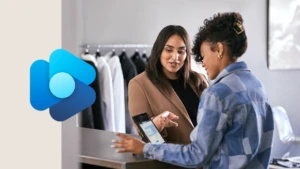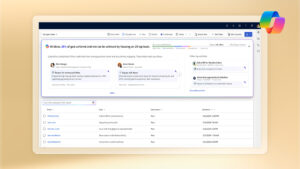
What it takes to be a smart retailer
There have been plenty of stories about the downfall of retail, yet time and again, certain brands rise to the top. One thing these retailers have in common: they use technology and data to make intelligent decisions for their business.
The sheer volume of data available—gathered from transactions, social media, opt-in phone tracking and more—can be overwhelming. 2.5 quintillion bytes of data are generated every day. What’s the most effective way to capture and filter valuable data, and how can it improve both the customer experience and the retailer’s bottom line?
Smart retailers don’t just gather data; using advanced analytics and technology, they apply it to create a more holistic experience through the entire customer journey—from browsing to purchase to fulfillment.
Getting personal
We often forget that data is personal; it’s generated by individuals who have individual wants and needs. This means that it can be used to create personalized experiences for customers—something they’ve come to expect.
A common example of this is personalized shopping recommendations powered by artificial intelligence and machine learning. Advanced analytics like this are also used to personalize loyalty programs, allowing retailers to tailor the experience for their best customers. 86 percent of customers will pay more for a better customer experience, and customers who are engaged in an experience are less likely to think about product cost.
Transforming the in-store experience
$0.56 of every dollar is influenced by a digital interaction—but that doesn’t mean that brick-and-mortar stores are no longer important. Rather, it means that retailers must use data to create a seamless experience between their digital and physical touchpoints. Using data gathered from digital channels, sales associates can now greet customers by name when they enter the store, as well as offer recommendations based on past purchases.
Mobile technology means that sales associates can be equipped with mobile point of sale (mPOS) devices—tablets or smartphones that are able to process payments anywhere in the store. A quick and easy checkout process is two times more important than any other retail experience, so getting this right is a big win.
Empowering frontline sales associates
Increased device connectivity and internet usage have resulted in more knowledgeable consumers. This is clearly a benefit for the customer, but it can put sales associates at a disadvantage. Digital tools enable frontline sales associates to have better access to product information and inventory. 72 percent of customers who dealt with a store associate using a mobile device to provide product info, credit card checkout, or inventory look-up said it resulted in a better shopping experience.
Sales associates can also benefit from mobile scheduling apps, which allow them more control over their shifts. Managers can use these same apps to send out announcements, training and more. These types of apps can help employees become more engaged and invested, resulting in improved customer relationships—and a 20 percent leap in sales.
Embracing robotics
Retailers are increasingly looking to offset mounting health care and labor costs, and one key way of doing this is by leveraging robotics and automation technologies. Warehouse and fulfillment centers are an obvious place to implement this. Robotic warehouse systems can be expensive to implement, but ultimately, they can save retailers as much as 80 percent in distribution-labor costs.
Automation can improve the customer experience in-store, as well. Electronic shelf-label technology automates retailers’ price-changing systems, eliminating the need for employees to change them by hand and allowing companies to run and display special offers in real-time. After a product is located, self-scan and self-checkout options empower the customer to speed through checkout as quickly as they like, on their own terms.
Providing retailers with smart solutions
Intelligent retail is not just about having the right data—it’s having the ability to apply that data, work smarter, and deliver better outcomes for customers. To stay competitive, retailers need systems in place to effectively utilize cutting-edge technology.
At Microsoft, we’re building solutions that don’t just provide access to data—they apply that data to garner insights and help retailers make more intelligent decisions that will grow their business. Microsoft Dynamics 365 helps retailers better engage their customers, leveraging advanced analytics and machine learning to deliver more relevant offers and experiences.
Our omnichannel solutions provide greater continuity as customers move between in-store and digital experiences. We’re making retail employees smarter, too, with collaborative tools and mobile access that optimize daily operations. Through intelligent distribution, retailers can automatically route orders to ship from the most optimal location—resulting in lower costs, faster delivery times, and better experiences for customers.
Uncover more trends changing the retail landscape
Learn more about intelligent retailing in our ebook Seven Emerging Trends That Are Changing Retail, featuring insights from retail industry technologists.




